Data Analytics Assignment: Generating Innovative Analytics Solution for Freshly Inc
Question
Task: This is a data analytics assignmentaimed at generating innovative analytics solutions for a Company. The objective is to analyse the given datasets from a relevant firm’s perspective in terms of implications and strategies which the chosen company could adopt to improve its functions, resources and processes efficiently and effectively. You are expected to work in a group to find a dataset with minimum of 10,000 rows from publicly available sources. You also need to hypothetically identify a company (chosen company) who could get benefits from the analysis of the dataset. Below is a list of open data sources:
1. World Bank Open Data
2. WHO (World Health Organization) — Open data repository
3. Google Public Data Explorer
4. Registry of Open Data on AWS (RODA)
5. European Union Open Data Portal
6. FiveThirtyEight
7. U.S. Census Bureau
8. Data.gov
9. UNICEF Dataset
10. DBpedia
11. freeCodeCamp Open Data
12. Australian Govt Data
Your group is to complete the following tasks:
Task 1- Background information
Write a description of the selected dataset and project, and its importance for your chosen company. Information must be appropriately referenced. [1 Page]
Task 2 – Perform Data Mining on data view
Upload the selected dataset on SAP Predictive Analysis. For your dataset, perform the relevant data analysis tasks on data uploaded using data mining techniques such as classification/association/time series/clustering and identify the BI reporting solution and/or dashboards you need to develop for the operational manager of the chosen company. [2-3 Pages]
Task 3 – Research
Justify why you chose the BI reporting solution/dashboards/data mining technique in Task 3 and why those data sets attributes are present and laid out in the fashion you proposed (feel free to include all other relevant justifications).
Note: To ensure that you discuss this task properly, you must include visual samples of the reports you produce (i.e. the screenshots of the BI report/dashboard must be presented and explained in the written report; use ‘Snipping tool’), and also include any assumptions that you may have made about the analysis from Task 3. [1-2 Pages]
Task 4 – Recommendations for CEO
The CEO of the chosen company would like to improve their operations. Based on your BI analysis and the insights gained from your “Dataset” in the lights of analysis performed in previous tasks, make some logical recommendations to the CEO, and justify why/how your proposal could assist in achieving operational/strategic objectives with the help of appropriate references from peer-reviewed sources. [2-3 Pages].
Task 5 – Cover letter
Write a cover letter to the CEO of the chosen firm with the important data insights and recommendations to achieve operational/strategic objectives
Answer
1. Background Information
1.1 Project Description
The data analytics assignmentaims at assessing the potential and capability of business analytics and business intelligence for the benefit of businesses and economies. The purpose of the study is to provide meaningful insights to an organisation, business or economy by analysing, interpreting and visualizing selected data. The organisation chosen is concerned with the business and trade of livestock. Dataset on the Trade of live animals, edible meat, fish and other animal origin products for the past 30 years is obtained from the United Nations Database. This dataset is then used to draw concrete conclusions for the company.
1.2 Company Information
The name of the organisation for which the study is conducted, is “Freshly Inc”. Freshly inc. is a multinational firm concerned with the trade of livestock all around the world. The firm has been operating for the past 20 years, and has expanded significantly towards all kinds of animal origin products. The headquarters of the firm is in India, wherein it enjoys key distribution routes for these products.
There has been a decrease in the demand of animal origin products all around the world since 2019, mainly due to the fear of diseases. With the recent advent of the Covid – 19 virus all around the world, many people are shifting towards a healthier diet. Thus, Freshlyinc needs to draw useful insights about the demand and supply trends of such products to make useful effective decisions about the future.
The study thus aims to draw meaningful insights from the dataset about demand and supply trends, demand trends in each country, and forecast of the same for edible meat, fish, and other animal origin products. These insights will help the firm make effective profitable decisions about its business.
1.3 Data Handling and Treatment
Data on the trade of live animals, edible meat, fish and other animal origin products for the years 1988 to 2019 is obtained from the United Nations database. Time series analysis is run on the dataset to determine trends and forecast the demand and supply values of the future. This analysis is run using the SAP Predictive Analytics software. Data is then analysed and visualised to draw useful insights about the differences in demand over different countries of the world. These insights are then provided to the company so that it can take effective and efficient decisions about its operations and scale.
2. Results and Findings
The data obtained is analysed and visualised using the SAP software. First, it is necessary to understand the nature and type of data collected. This can be shown in the following manner:
2.1 Descriptive Analysis:
The data on trade of live animals, edible meat, fish, etc is obtained from the United Nations database. Preview of the data is as follows:
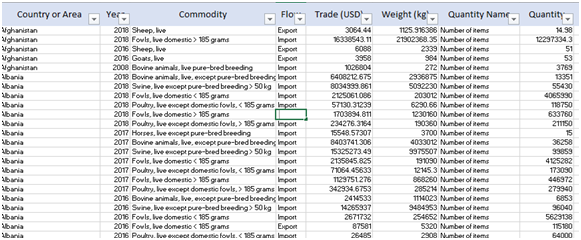
Figure 1: Dataset Review
The data is collected under the following heads:
1) Country: The data is collected for 180 countries all around the world which participate in the trade of live animals, edible meat, fish and other animal origin products.
2) Year: The data is collected for the time period of 1988 to 2018.
3) Commodity: Shows the type of commodity which is traded
4) Flow: Whether that particular commodity in that year for that country is an inflow or outflow
5) Trade: Shows the actual amount of the trade in United States Dollars
6) Weight: Shows the weight of the item traded in kg
7) Quantity: shows the total quantity of an item traded for each country in each year.
After cleaning the data and removing all the missing values, the dataset has approximately 47,000 entries. This dataset is then used for time series analysis to determine trends and forecast future demand.
2.2 Time Series and Trend Analysis
The business wants to determine whether there is scope for future growth in the trade of livestock or not. Due to the recent shift towards veganism, the demand for animal products has gone down. This type of predictive analysis is done by creating a time series model in the following manner:
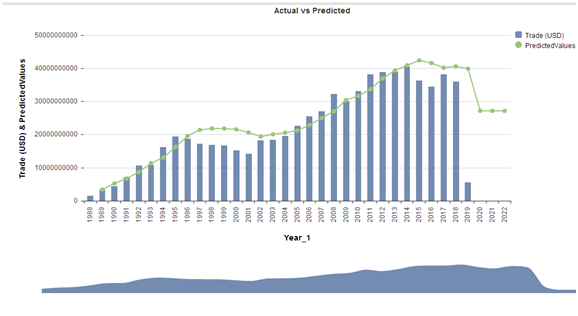
Figure 2: Time Series analysis of Live Animals' Trade Value
The above graph plots the total value of trade of live animals of every year since 1988, and further forecasts the future value till 2022. The goodness of fit value for the above analysis is 0.62, which shows that the model is a good fit. It is evident that the trade of live animals has been on an upward trend since 1988, but recently has gone down due to the rise of veganism. A clearer Picture can be provided by the following chart:
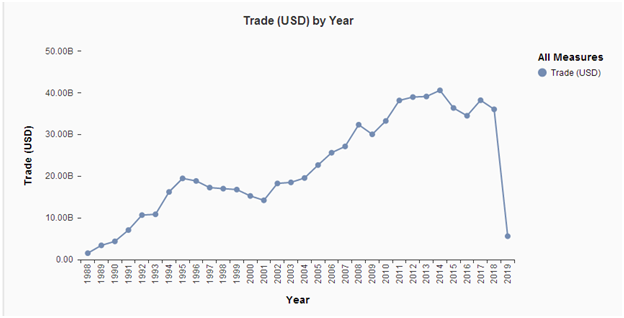
Figure 3: Line chart of total trade value of live animals 1988 - 2019
As shown by the above graph, the total trade fell drastically in the year 2019 all over the world. This can be a result of the recent trend to switch to veganism, or vegetarianism. This trend has led to a significant decline in the demand of live animals in various countries. Another reason could be the risk of acquiring harmful diseases like Ebola, Coronavirus, and so on. Taking the average trade amount per year,the following plot is obtained:
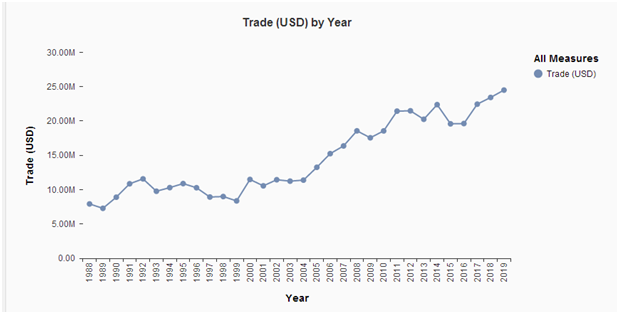
Figure 4: Line chart of average trade value (USD) of live animals 1988 - 2019
The above graph shows the average trade amount every year since 1988, which has been on a constant upward trend. Even though the total trade has decreased, the average trade level has still increased. This shows thatthe number of countries involved in the trade has gone down, even though the amount of trade between the remaining countries has remained stable.
Similarly, the analysis now shifts from trade of live animals to edible meat. The data is collected in the similar manner under the heads of country, year, commodity, quantity, weight and trade in USD. The series analysis on the data for edible meat shows the following results:
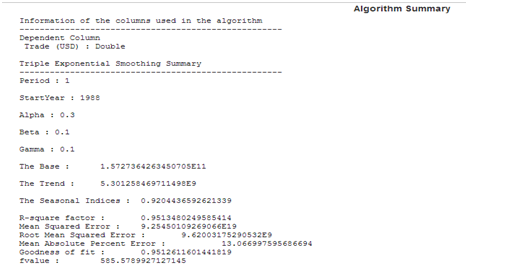
Figure 5: Time series model for edible meat
The time series analysis of the data the trade of edible meat gives a goodness of fit value of 0.95, which shows that the model is an excellent fit. The trend can be seen as follows:
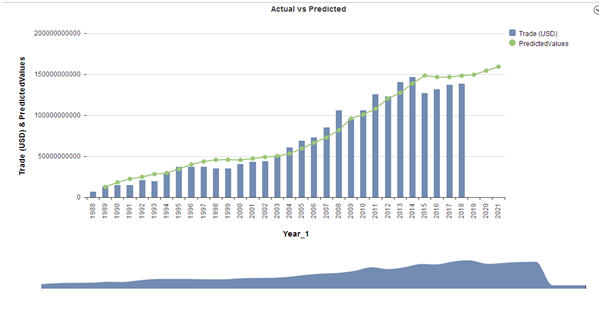
Figure 6: Time series trend and forecast for edible meat
It is evident that the trade value for edible meat has been on an upward trend for the past 30 years. The model predicts that this trend will continue for the next three years as well. Thus, demand for edible meat will continue to increase for the foreseeable future. The line graph below plots the average trade value in USD per year:
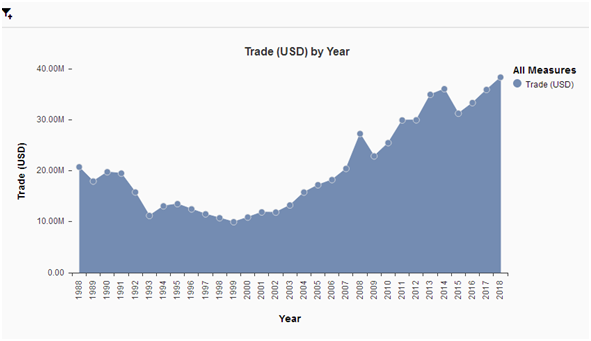
Figure 7: Area chart of average trade value of edible meat 1988 - 2018
This confirms the upward trend predicted by the model, and shows that the demand for edible meat is likely to rise. Even though the trade value of live animals has gone down, the demand for edible meat has gone up. The only reason behind this could be the campaign to help protect live animals from being slaughtered. This hinders the business’ operations and cuts profits.
Finally, the author looks at fish and other animal origin products. The data contains the total trade value for each country of fish and aquatic products for the time period of 1988 to 2018. The rows with missing values are removed, and time series analysis is run on the dataset to get the following results:
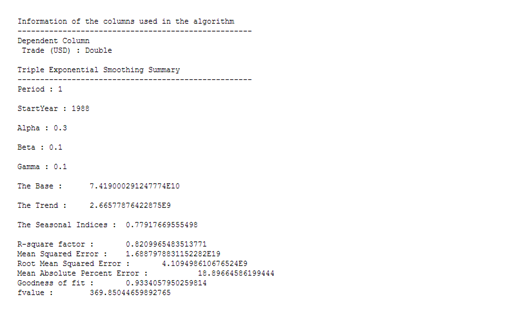
Figure 8: Time series model result for fish and other aquatic products
The model created has a goodness of fit value of 0.93, which shows that the model is an excellent fit. The trend of the predicted values can be seen as follows:
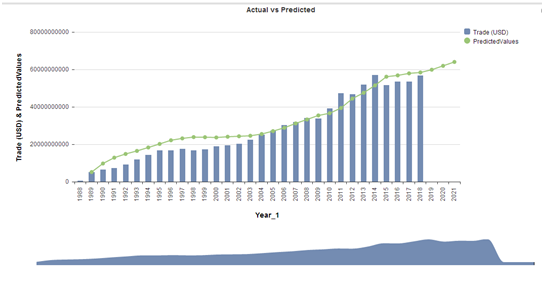
Figure 9: Time series trend and forecast for trade value of fish and other related products
The above plot shows that the demand and total value of trade of fish related products has been on an upward trend for time period of 1988 to 2018. This trend is likely to continue for the next three years as well, and the demand seems to be really high for the same. This can be due to individuals’ perception of fish and aquatic products to be extremely healthy. People tend to prefer it over edible meat due to its nutritional value. Thus, the demand for edible fish and other aquatic products is likely to rise in the future, which can provide a business opportunity for Freshlyinc.
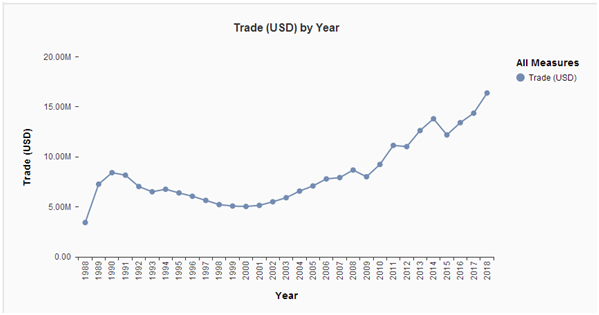
Figure 10: Line chart of average trade value of fish and other aquatic products
The line chart above shows the trend which has been increasing at an increasing rate since 2002. The last 3 – 4 years have seen a sharp rise in demand of fish and aquatic products. This attributed to people shifting to veganism and still eating sea food. That is why the shift ahs not affected aquatic products or its derivatives.
2.3 Geographical Analysis
Analysing the trend of live animals, edible meat, fish and other aquatic products is not enough. It is also necessary for the company to determine the areas where the demand is high. This is done using the following geo map:
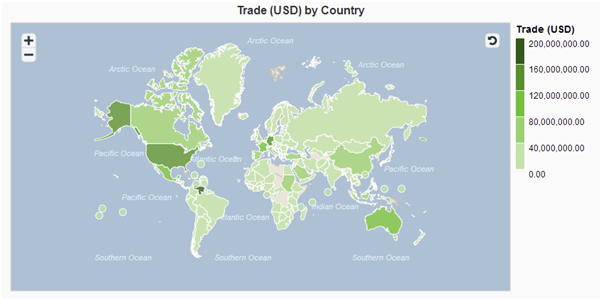
Figure 11: Geo - Map of trade value of live animals for 202 countries
The above geo map plots the level of trade of live animals in each of the 202 countries of the world. It is evident that US, China, Canada, Australia, Venezuela, Sudan and so on are the top countries with the highest level of trade for live animals.
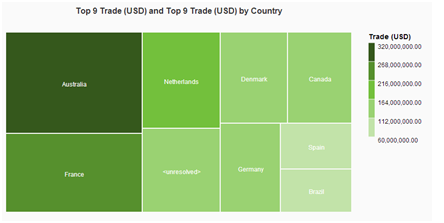
Figure 12: Top 10 exporters of live animals in the world
The are the top 10 countries in terms of level of trade (export) of live animals throughout the world. It is evident that Australia is the largest exporter of live animals in the world, followed by France and Netherlands.
The analysis now shifts to the trade of edible meat across the world, which can be shown by the following tree map:
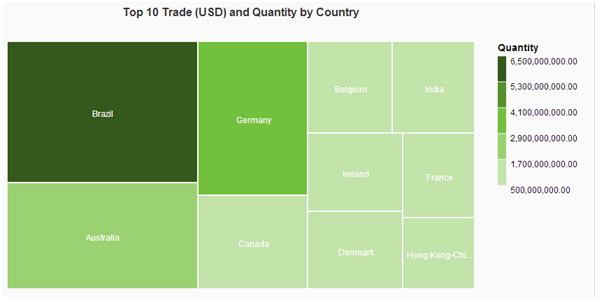
Figure 13: Top 10 exporters of edible meat in the world, colour by quantity
The graph plots the top 10 exporters of edible meat in the world. The size of the above tree map is determined by the value of each trade in USD, while the color shade is determined by the quantity of the trade. It is evident that Brazil is the largest exporter of edible meat, and enjoys the highest value for it as well, followed by Australia and Brazil.
Finally, the analysis focuses on fish and other aquatic products, using the following geo – map:
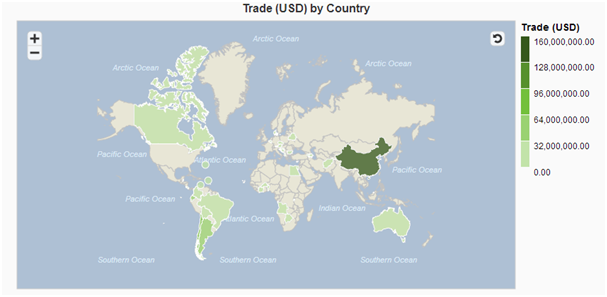
Figure 14: Geo map of top traders of fish and other aquatic products
The above Geo Map shows that China is the largest dealer of aquatic products in the world, followed by Argentina. The following tree map gives a better picture:
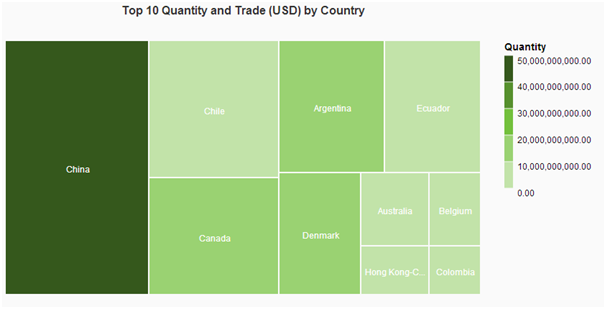
Figure 15: Top 10 countries in terms of trade of fish and other aquatic products
The above tree map plots the top 10 exporters of fish and aquatic products in the world. Size of each box is determined by the value of trade, while the color is determined by the quantity of trade. It is evident that China leads the race of trade in aquatic life in the world by a huge margin, followed by Chile and Canada.
3. Discussion
The purpose of the report was to provide useful results for the company ‘Freshly inc’. The report provides a detailed investigation into the livestock industry for the company and draws concrete results about the same. Live animals, edible meat, fish and other aquatic products are taken into consideration for this study. First, trend and time series analysis is conducted on the data for live animals, edible meat, fish and aquatic products to determine the latest trends as well as predict the future demand of the same. Trade value of each product is taken as the dependent variable. The model formed for the trade of live animals across the world turns out to be a good fit with a 0.62 value of goodness of fit. The model predicts that the trade value of live animals will slowly reduce in the next few years. However, the average trade per year continues to rise, which can be due to many countries refusing to deal with live animals, while the remaining countries still adding onto the demand. The fall in value of trade can be due to low demand, higher risk and a shift towards veganism.
The model formed for the trade of edible meat shows a goodness of fit value of 0.95, which proves that its an excellent fit. The model shows that so far there has been an upward trend in the value of trade for edible goods, and predicts that this trade will continue to rise further. This shows that even though trade for live animals continues to fall, the trade for edible meat is still on the rise. Finally, the model created for fish and other aquatic products gives a goodness of fit value of 0.93, which proves that it’s an excellent predictor. It gives similar results, showing that there has been an uptrend so far, which is likely to continue for the next few years. Thus, edible meat, fish and aquatic products tend to show a rise in demand, and trade value, whereas live animals show the opposite.
It is not enough to only find the trend in demand and trade of these goods over the years. Where this trade is happening is also essential to determine the best place for operations. For live animals, China, Venezuela, Sudan, Australia tend to be the largest exporters, whereas USA, Canada, and so on tend to be the largest importers. Brazil is the largest exporter and profiter of edible meat in the world, followed by Australia, whereas USA and China re the largest importers of the same. Finally, China seems to be the largest exporter and dealer of fish and aquatic products in the world. Thus, it is evident that China, USA, Sudan, Saudi Arabia, Canada, Australia and Germany are the big players in this region.
4. Conclusion
The report draws meaningful insights for the company ‘Freshly inc’ from the data regarding trade of livestock, meat, fish and so on. The insights are concerned with the trend analysis and prediction, as well as determining the strength of demand in each country throughout the world. Results show that there is a fall in the trade of live animals around the world. While some countries are restricting trade of live animals, the countries which are not seem to be increasing the trade. This is why the average trade value is on an upward trend, even though the total trade value is on a downward trend. Both edible meat and fish products seem to be on an upward trend for the near future. Turning to locational differences, it is visible that United States of America and Canada are the biggest importers of all the products taken into consideration. Australia is the biggest exporter of live animals in the world, and USA is the biggest importer. Brazil and Australia are the major players in the export of edible meat, and China is the largest exporter of fish and aquatic products in the world. This analysis provides the company with useful information to make decisions about the future of the business. Due to rise in concerns of risk of diseases as well as the shift towards vegetarianism and veganism, Freshlyinc needs to make efficient decisions to make sure that it stays in business.
Analysing data in real time has now become more important than ever. Data analytics tools and techniques help businesses know what occurred (descriptive analysis), it occurred (diagnostic analysis), looking forward to what might occur (predictive analysis), and finally how to influence future occurrences (prescriptive analysis) (Ajah & Nweke , 2019). This four way analysis then provides concrete results for the businesses to correct any inefficiency in the business. The report above provides the same four way analysis of the meat industry. Many other reports and academic papers have drawn similar conclusions from using data analytics techniques, such as (Parks & Thambusamy, 2017), which shows that business analytics is playing a major role in both qualitative as well as quantitative manner. Many studies have even integrated newer technologies into the area of data analytics, like machine learning, AI, etc. One such study is (Babu, Raj, & Devi, 2019), which focuses on how Artificial intelligence and machine learning techniques are revolutionizing the data analysis area, wherein the four way analysis is now automated and embedded analytics techniques are used to further assist the business in becoming more efficient, which in turn makes it more profitable. Thus, the analysis provided in the report as well as the recommendations explained below will significantly help the organisation in correcting any inefficiencies and increasing profit, with least effort.
5. Recommendations
The author provides the following recommendations for the CEO of Freshly inc to employ after careful analysis of the data:
1) The analysis shows that there is a fall in demand for live animals. Therefore, the company should restrict or stop operations of trade of live animals in the world.
2) Geographical analysis showed that USA and Canada are the largest buyers of live animals whereas Australia is the largest seller. The company should thus open its operations in Australia if it wishes to focus on the trade of live animals.
3) Since fish, aquatic products and edible meat tend to be on an upward trend, the company should focus on the marketing and distribution of these products to the right buyer.
4) USA and Canada are again the largest buyers, while Brazil is the biggest seller. The company can serve as an intermediary among them. Edible meat is in high demand all across the world, and the company can profit off of it by opening its operations in Brazil where there is abundance of such products.
5) China is the largest supplier of fish and aquatic products. The company can focus on the distribution of such products from China to countries all around the world.
6) Countries like Sudan, Saudi Arabia, Pakistan, Venezuela, etc are also big players in the industry with cheap products, which can be used to attain high profit.
These recommendations can help the CEO make effective decisions about the business as well as the market. Many studies like (Davenport & Dyché, 2013), (Liu, Han, & DeBello, 2018), (Rossum, 2011) and so on all point to the same result as the report above, showing how big data analytics techniques are beneficial for the business’ profitability and efficiency, both in the long run and short run.
6. References
Ajah, I., & Nweke , H. (2019). Big Data and Business Analytics: Trends, Platforms, Success Factors and Applications. MDPI.
Babu, S., Raj, B., & Devi, A. (2019). Future Trends of Business
Intelligence and Big Data Analytics in Ubiquitous Environment.Data analytics assignmentInternational Journal of Engineering and Advanced Technology.
Davenport, T., & Dyché, J. (2013). Big Data in Big Companies. International Institute for Analytics.
Liu, Y., Han, H., & DeBello, J. (2018). The Challenges of Business Analytics: Successes and Failures. Hawaii International Conference on System Sciences.
Parks, R., & Thambusamy, R. (2017). Understanding Business Analytics Success and Impact: A qualitative study. Information Systems Education Journal .
Rossum, P. (2011). Big Data Analytics. TDWI.












